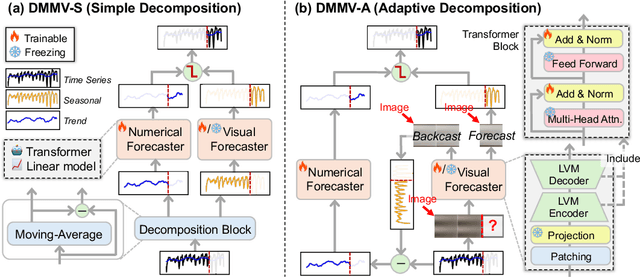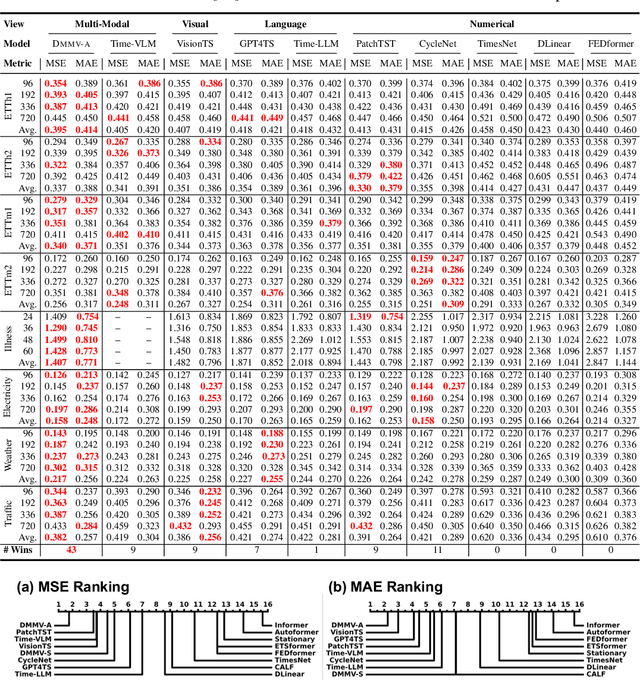Ziming Zhao
A.S.E: A Repository-Level Benchmark for Evaluating Security in AI-Generated Code
Aug 25, 2025Abstract:The increasing adoption of large language models (LLMs) in software engineering necessitates rigorous security evaluation of their generated code. However, existing benchmarks are inadequate, as they focus on isolated code snippets, employ unstable evaluation methods that lack reproducibility, and fail to connect the quality of input context with the security of the output. To address these gaps, we introduce A.S.E (AI Code Generation Security Evaluation), a benchmark for repository-level secure code generation. A.S.E constructs tasks from real-world repositories with documented CVEs, preserving full repository context like build systems and cross-file dependencies. Its reproducible, containerized evaluation framework uses expert-defined rules to provide stable, auditable assessments of security, build quality, and generation stability. Our evaluation of leading LLMs on A.S.E reveals three key findings: (1) Claude-3.7-Sonnet achieves the best overall performance. (2) The security gap between proprietary and open-source models is narrow; Qwen3-235B-A22B-Instruct attains the top security score. (3) Concise, ``fast-thinking'' decoding strategies consistently outperform complex, ``slow-thinking'' reasoning for security patching.
Chimera: Harnessing Multi-Agent LLMs for Automatic Insider Threat Simulation
Aug 12, 2025Abstract:Insider threats, which can lead to severe losses, remain a major security concern. While machine learning-based insider threat detection (ITD) methods have shown promising results, their progress is hindered by the scarcity of high-quality data. Enterprise data is sensitive and rarely accessible, while publicly available datasets, when limited in scale due to cost, lack sufficient real-world coverage; and when purely synthetic, they fail to capture rich semantics and realistic user behavior. To address this, we propose Chimera, the first large language model (LLM)-based multi-agent framework that automatically simulates both benign and malicious insider activities and collects diverse logs across diverse enterprise environments. Chimera models each employee with agents that have role-specific behavior and integrates modules for group meetings, pairwise interactions, and autonomous scheduling, capturing realistic organizational dynamics. It incorporates 15 types of insider attacks (e.g., IP theft, system sabotage) and has been deployed to simulate activities in three sensitive domains: technology company, finance corporation, and medical institution, producing a new dataset, ChimeraLog. We assess ChimeraLog via human studies and quantitative analysis, confirming its diversity, realism, and presence of explainable threat patterns. Evaluations of existing ITD methods show an average F1-score of 0.83, which is significantly lower than 0.99 on the CERT dataset, demonstrating ChimeraLog's higher difficulty and utility for advancing ITD research.
Multi-Modal View Enhanced Large Vision Models for Long-Term Time Series Forecasting
May 29, 2025



Abstract:Time series, typically represented as numerical sequences, can also be transformed into images and texts, offering multi-modal views (MMVs) of the same underlying signal. These MMVs can reveal complementary patterns and enable the use of powerful pre-trained large models, such as large vision models (LVMs), for long-term time series forecasting (LTSF). However, as we identified in this work, applying LVMs to LTSF poses an inductive bias towards "forecasting periods". To harness this bias, we propose DMMV, a novel decomposition-based multi-modal view framework that leverages trend-seasonal decomposition and a novel backcast residual based adaptive decomposition to integrate MMVs for LTSF. Comparative evaluations against 14 state-of-the-art (SOTA) models across diverse datasets show that DMMV outperforms single-view and existing multi-modal baselines, achieving the best mean squared error (MSE) on 6 out of 8 benchmark datasets.
From Images to Signals: Are Large Vision Models Useful for Time Series Analysis?
May 29, 2025Abstract:Transformer-based models have gained increasing attention in time series research, driving interest in Large Language Models (LLMs) and foundation models for time series analysis. As the field moves toward multi-modality, Large Vision Models (LVMs) are emerging as a promising direction. In the past, the effectiveness of Transformer and LLMs in time series has been debated. When it comes to LVMs, a similar question arises: are LVMs truely useful for time series analysis? To address it, we design and conduct the first principled study involving 4 LVMs, 8 imaging methods, 18 datasets and 26 baselines across both high-level (classification) and low-level (forecasting) tasks, with extensive ablation analysis. Our findings indicate LVMs are indeed useful for time series classification but face challenges in forecasting. Although effective, the contemporary best LVM forecasters are limited to specific types of LVMs and imaging methods, exhibit a bias toward forecasting periods, and have limited ability to utilize long look-back windows. We hope our findings could serve as a cornerstone for future research on LVM- and multimodal-based solutions to different time series tasks.
Harnessing Vision Models for Time Series Analysis: A Survey
Feb 13, 2025



Abstract:Time series analysis has witnessed the inspiring development from traditional autoregressive models, deep learning models, to recent Transformers and Large Language Models (LLMs). Efforts in leveraging vision models for time series analysis have also been made along the way but are less visible to the community due to the predominant research on sequence modeling in this domain. However, the discrepancy between continuous time series and the discrete token space of LLMs, and the challenges in explicitly modeling the correlations of variates in multivariate time series have shifted some research attentions to the equally successful Large Vision Models (LVMs) and Vision Language Models (VLMs). To fill the blank in the existing literature, this survey discusses the advantages of vision models over LLMs in time series analysis. It provides a comprehensive and in-depth overview of the existing methods, with dual views of detailed taxonomy that answer the key research questions including how to encode time series as images and how to model the imaged time series for various tasks. Additionally, we address the challenges in the pre- and post-processing steps involved in this framework and outline future directions to further advance time series analysis with vision models.
Rethinking Membership Inference Attacks Against Transfer Learning
Jan 20, 2025Abstract:Transfer learning, successful in knowledge translation across related tasks, faces a substantial privacy threat from membership inference attacks (MIAs). These attacks, despite posing significant risk to ML model's training data, remain limited-explored in transfer learning. The interaction between teacher and student models in transfer learning has not been thoroughly explored in MIAs, potentially resulting in an under-examined aspect of privacy vulnerabilities within transfer learning. In this paper, we propose a new MIA vector against transfer learning, to determine whether a specific data point was used to train the teacher model while only accessing the student model in a white-box setting. Our method delves into the intricate relationship between teacher and student models, analyzing the discrepancies in hidden layer representations between the student model and its shadow counterpart. These identified differences are then adeptly utilized to refine the shadow model's training process and to inform membership inference decisions effectively. Our method, evaluated across four datasets in diverse transfer learning tasks, reveals that even when an attacker only has access to the student model, the teacher model's training data remains susceptible to MIAs. We believe our work unveils the unexplored risk of membership inference in transfer learning.
HyperSMOTE: A Hypergraph-based Oversampling Approach for Imbalanced Node Classifications
Sep 09, 2024



Abstract:Hypergraphs are increasingly utilized in both unimodal and multimodal data scenarios due to their superior ability to model and extract higher-order relationships among nodes, compared to traditional graphs. However, current hypergraph models are encountering challenges related to imbalanced data, as this imbalance can lead to biases in the model towards the more prevalent classes. While the existing techniques, such as GraphSMOTE, have improved classification accuracy for minority samples in graph data, they still fall short when addressing the unique structure of hypergraphs. Inspired by SMOTE concept, we propose HyperSMOTE as a solution to alleviate the class imbalance issue in hypergraph learning. This method involves a two-step process: initially synthesizing minority class nodes, followed by the nodes integration into the original hypergraph. We synthesize new nodes based on samples from minority classes and their neighbors. At the same time, in order to solve the problem on integrating the new node into the hypergraph, we train a decoder based on the original hypergraph incidence matrix to adaptively associate the augmented node to hyperedges. We conduct extensive evaluation on multiple single-modality datasets, such as Cora, Cora-CA and Citeseer, as well as multimodal conversation dataset MELD to verify the effectiveness of HyperSMOTE, showing an average performance gain of 3.38% and 2.97% on accuracy, respectively.
CHASE: A Causal Heterogeneous Graph based Framework for Root Cause Analysis in Multimodal Microservice Systems
Jun 28, 2024Abstract:In recent years, the widespread adoption of distributed microservice architectures within the industry has significantly increased the demand for enhanced system availability and robustness. Due to the complex service invocation paths and dependencies at enterprise-level microservice systems, it is challenging to locate the anomalies promptly during service invocations, thus causing intractable issues for normal system operations and maintenance. In this paper, we propose a Causal Heterogeneous grAph baSed framEwork for root cause analysis, namely CHASE, for microservice systems with multimodal data, including traces, logs, and system monitoring metrics. Specifically, related information is encoded into representative embeddings and further modeled by a multimodal invocation graph. Following that, anomaly detection is performed on each instance node with attentive heterogeneous message passing from its adjacent metric and log nodes. Finally, CHASE learns from the constructed hypergraph with hyperedges representing the flow of causality and performs root cause localization. We evaluate the proposed framework on two public microservice datasets with distinct attributes and compare with the state-of-the-art methods. The results show that CHASE achieves the average performance gain up to 36.2%(A@1) and 29.4%(Percentage@1), respectively to its best counterpart.
UltraGelBot: Autonomous Gel Dispenser for Robotic Ultrasound
Jun 28, 2024Abstract:Telerobotic and Autonomous Robotic Ultrasound Systems (RUS) help alleviate the need for operator-dependability in free-hand ultrasound examinations. However, the state-of-the-art RUSs still rely on a human operator to apply the ultrasound gel. The lack of standardization in this process often leads to poor imaging of the scanned region. The reason for this has to do with air-gaps between the probe and the human body. In this paper, we developed a end-of-arm tool for RUS, referred to as UltraGelBot. This bot can autonomously detect and dispense the gel. It uses a deep learning model to detect the gel from images acquired using an on-board camera. A motorized mechanism is also developed, which will use this feedback and dispense the gel. Experiments on phantom revealed that UltraGelBot increases the acquired image quality by $18.6\%$ and reduces the procedure time by $37.2\%$.
Moderating Illicit Online Image Promotion for Unsafe User-Generated Content Games Using Large Vision-Language Models
Mar 27, 2024Abstract:Online user-generated content games (UGCGs) are increasingly popular among children and adolescents for social interaction and more creative online entertainment. However, they pose a heightened risk of exposure to explicit content, raising growing concerns for the online safety of children and adolescents. Despite these concerns, few studies have addressed the issue of illicit image-based promotions of unsafe UGCGs on social media, which can inadvertently attract young users. This challenge arises from the difficulty of obtaining comprehensive training data for UGCG images and the unique nature of these images, which differ from traditional unsafe content. In this work, we take the first step towards studying the threat of illicit promotions of unsafe UGCGs. We collect a real-world dataset comprising 2,924 images that display diverse sexually explicit and violent content used to promote UGCGs by their game creators. Our in-depth studies reveal a new understanding of this problem and the urgent need for automatically flagging illicit UGCG promotions. We additionally create a cutting-edge system, UGCG-Guard, designed to aid social media platforms in effectively identifying images used for illicit UGCG promotions. This system leverages recently introduced large vision-language models (VLMs) and employs a novel conditional prompting strategy for zero-shot domain adaptation, along with chain-of-thought (CoT) reasoning for contextual identification. UGCG-Guard achieves outstanding results, with an accuracy rate of 94% in detecting these images used for the illicit promotion of such games in real-world scenarios.
 Add to Chrome
Add to Chrome Add to Firefox
Add to Firefox Add to Edge
Add to Edge